An all-terrain vehicle (ATV) is any self-propelled vehicle with two or more wheels that is manufactured for sale to be used primarily off-highway or in off-road competitions, and that is no wider than 70 inches and weighs no more than 1,000 pounds. This does not include vehicles manufactured for off-highway use and designed exclusively for travel on snow or ice, and supported by one or more skis, belts or cleats that utilize an endless belt tread. Those vehicles, which include snowmobiles, are subject to other laws and regulations.
An ATV must be registered with the Department of Motor Vehicles (DMV) if it is operated anywhere in New York State, including on the owner's property.
When you register a new or used ATV for the first time, your registration will expire each year on August 31. Registrations for ATVs originally registered before April 1, 2005, will continue to expire each year on April 30.
ATV dealers are required by law to register every ATV they sell to New York State residents or to non-residents before the purchaser takes delivery; unless the purchaser qualifies for an exemption from registration. A purchaser is exempt from registration when the ATV will be used exclusively: outside of New York State; at special events; for agricultural purposes; or for snow plowing other than for-hire. Dealers must have the purchaser complete and sign a "Declaration of Exemption From Snowmobile or All-Terrain Vehicle Registration" (RV-6).
Unless you qualify for an exemption from registration, you cannot take delivery from an authorized dealer until after the ATV is registered.
If you buy an ATV from a person who is not a New York State registered ATV dealer, you must register the ATV with the DMV. To register the ATV; you must complete an "Vehicle Registration/Title Application" (MV-82) and submit it to a motor vehicle issuing office. To register an ATV; you must provide proofs of ownership, sales tax payment or exemption, your identity, and your date of birth.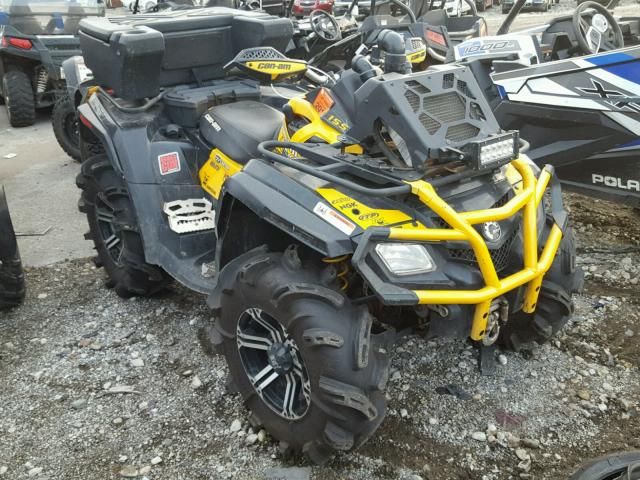
Acceptable proof of ownership are:
If you buy your ATV from a registered New York State dealer, you should receive a bill of sale in addition to the acceptable documents that prove ownership. The bill of sale must contain the dealer's name, address and dealer registration number, plus your name and address, the ATV vehicle identification number, the year, make, model, and number of wheels. The bill of sale also must indicate that the ATV is either new or used, and must confirm that the dealer has collected the appropriate sales tax.
If you buy the ATV from a person who is not a registered dealer, you must pay the sales tax at a motor vehicle office. To determine the proper amount of sales tax, the DMV needs proof of what you paid for the ATV. Have the seller sign and give you a Statement of Transaction- Sale or Gift of Motor Vehicle, Trailer, All-Terrain Vehicle (ATV), Vessel (Boat), or Snowmobile (pdf) (at NY State Department of Tax and Finance) (DTF-802). You must submit this form to the motor vehicle office, and pay the appropriate sales tax, before registering your ATV:
Acceptable documents that prove payment of sales tax are:
To register an ATV, you must provide proof of who you are. You must provide proof of identity, date of birth, and at least six points of proof of name. For the most recent listing of acceptable documents see "Proofs of Identity For Registration and Title" (ID-82).
Documents that automatically qualify as six points are:
The ATV registration and registration renewal fee is $12.50 per year – it is not prorated by month. You also must pay a $12.50 license plate fee when you first register your ATV. You will be issued a plate, a registration sticker and an attached registration document. The plate must be attached to the rear of the ATV, and the sticker should be placed at the right side of the plate. You should carry the registration document when operating your ATV.
You may not operate any ATV anywhere in New York State, except on your own property, unless it is covered by liability insurance. Minimum required coverage is $50,000/$100,000 for death, $25,000/$50,000 for injury, and $10,000 for property damage in any one accident. You must show proof of this insurance upon the request of a judge, the police, or a person claiming to have suffered injury or property damage from your operation of the ATV.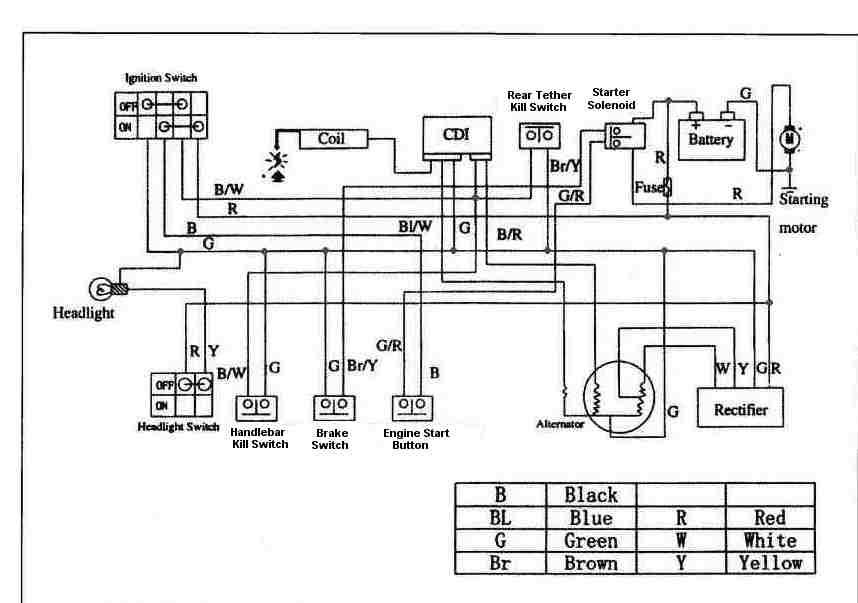
If you move, cross out the old address on your registration document and write in the new one. You also must report your address change to the DMV within 10 days.
If your ATV has become stolen, you should immediately report the theft to the police. If the ATV is to be, or already has been, destroyed or permanently removed from New York State, you should surrender the plate and registration document to a local motor vehicle office.
New York State honors valid out-of-state ATV registrations. If your home state does not require ATV registration, you must obtain a New York State registration before operating your ATV in this state.
You do not need a driver license to operate an ATV in New York State, but certain restrictions apply to operators under age 16.
If you are age 10 through age 15, you may operate an ATV only:
 You should carry your course completion certificate when operating any ATV.
You should carry your course completion certificate when operating any ATV.If you are under age 10, you may operate an ATV only:
Adult Supervision means being accompanied by a person at least 18 years of age, or a person 16 or 17 years of age who holds an ATV safety course completion certificate from an approved safety course provider.
ATV safety training courses approved by the Department of Motor Vehicles are available throughout the state. Telephone 1-800-887-2887 to enroll, or write to: ATV Safety Institute, Enrollment Express, 2 Jenner Street, Suite 150, Irvine, CA 92618-3806
ATV safety information also is available on the internet at www.nyatvsafety.net. Written questions about New York State's ATV or motorcycle safety programs should be addressed through the DMV web site or by mail:
NYS DMV
Motorcycle Safety Program
6 Empire State Plaza, Room 335
Albany, New York 12228
The application forms identified in this publication for ATV owners and operators are available at any motor vehicle office or at the DMV web site: dmv. ny.gov
ny.gov
RESPONSIBILITY OF PARENTS AND OWNERS
A parent or guardian may not knowingly permit or authorize a child under age 16 to operate an ATV in violation of state or local laws. An ATV owner, or another person in possession of an ATV, may not knowingly permit or authorize any person under age 16 to operate an ATV in violation of any state or local law.
Both the owner and the operator of an ATV may be held liable for injury and/or damages resulting from an ATV accident.
DMV recommends you avoid crossing a highway unless absolutely necessary. If you cross, you must follow these rules:
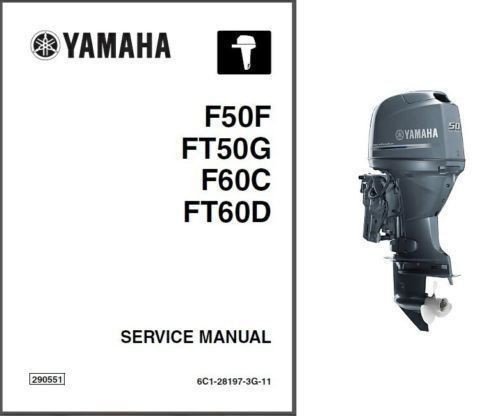
You may not operate an ATV on a highway unless it has been designated and posted for ATV use by the state or local authority. Usually, only the part of a highway between two off-highway trails will be posted for ATV use. Check with local police to be sure. DMV recommends that you turn your headlight and taillight on and wear bright, reflective clothing whenever you ride on a highway. Always enter the highway with care, and yield to other traffic.
You may not operate an ATV on public land unless it is specifically designated for ATV use, and it is allowed by a posted sign.
To operate an ATV on private land, you must have permission of the land owner or lessee. If you receive permission, make sure you know the boundaries of the property, and respect any special restrictions or requests of the land owner.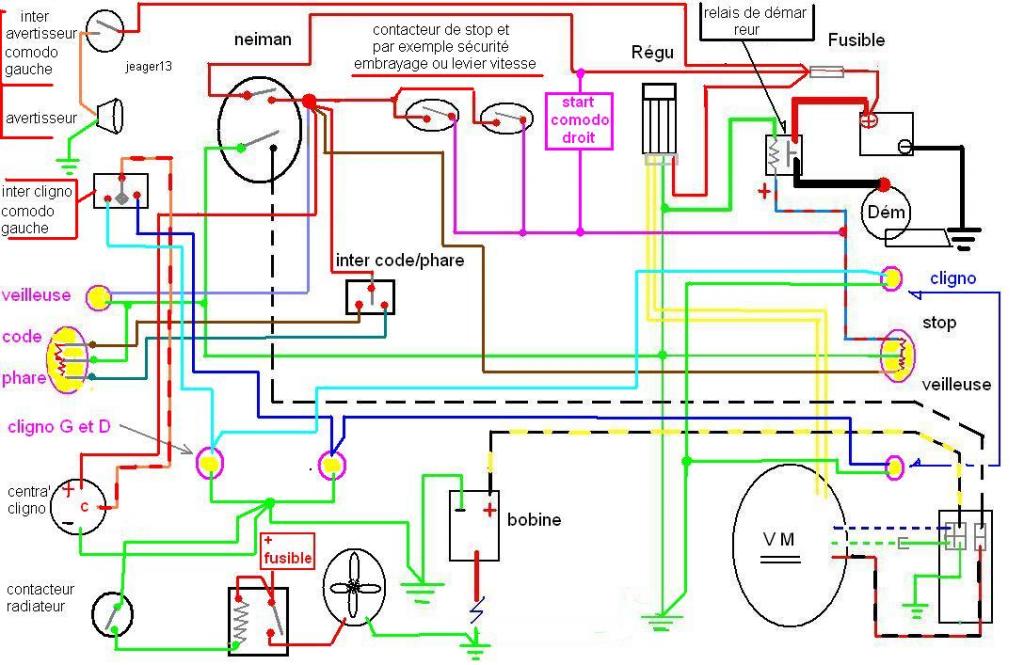 You could lose permission to ride on private land by littering, causing damage, or riding carelessly.
You could lose permission to ride on private land by littering, causing damage, or riding carelessly.
Whether you are the operator or passenger, you must wear a USDOT-approved helmet when riding an ATV. DMV recommends that you also wear a face shield or goggles, and protective clothes and footwear.
Your ATV must have the following equipment:
The law requires you to keep the ATV's headlight and taillight lighted when riding a half hour after sunset to a half hour before sunrise. For greater safety, DMV recommends you keep the lights on at all times.
In addition to obeying the ATV laws and rules, it is wise to ride your ATV with common sense and courtesy. Having fun on an ATV does not include annoying others or taking foolish risks. ATV riders who ignore the rules and the rights of others may cause ATV operation to be restricted or prohibited on private and public lands.
Having fun on an ATV does not include annoying others or taking foolish risks. ATV riders who ignore the rules and the rights of others may cause ATV operation to be restricted or prohibited on private and public lands.
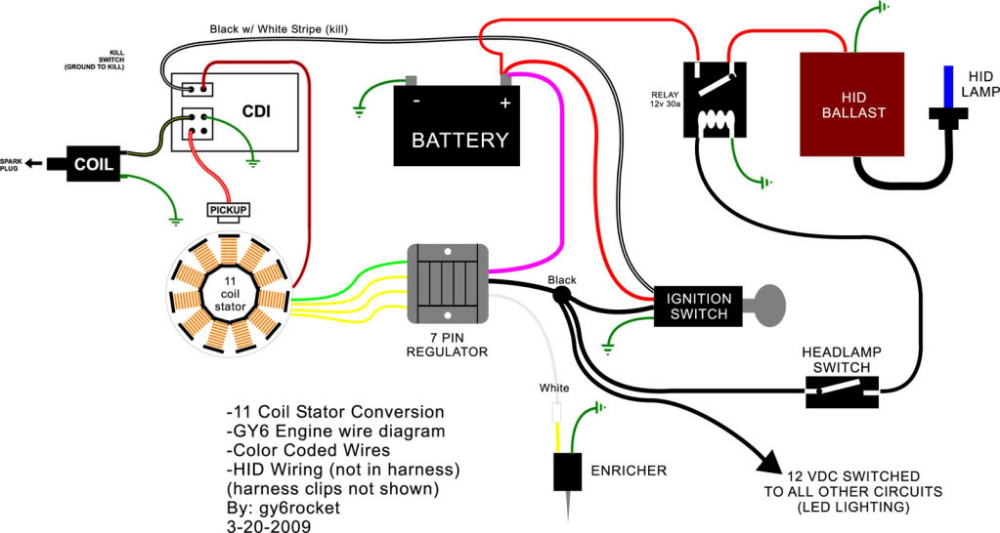
No locality may require its own ATV licenses or registrations, but it may impose additional restrictions or rules on ATV operation. Find out about special ATV rules in your area, and obey them.
The person in charge of an ATV special event or off-road competition must apply to the local jurisdiction for written authorization at least 30 days in advance, unless it is held entirely on private property.
If you are involved in an accident with your ATV, you must give your name and address, the name and address of the ATV owner and the plate number to injured persons, the owners of damaged property, and/or the police.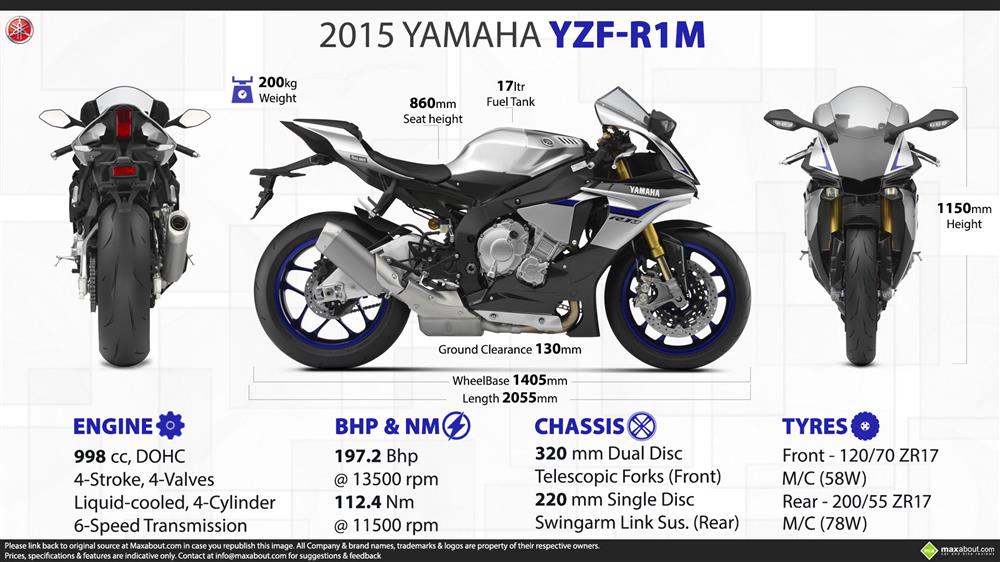 You also must show proof of insurance to persons claiming to have suffered injury or damage. If property is damaged, and you cannot locate the owner, you must give the above information to police as soon as possible.
You also must show proof of insurance to persons claiming to have suffered injury or damage. If property is damaged, and you cannot locate the owner, you must give the above information to police as soon as possible.
You must immediately report to the police any accident that involves death, personal injury or damage estimated at $600 or more to the property of any one person.
You must also file a Report of Motor Vehicle Accident (MV-104) with the Department of Motor Vehicles about an accident that results in a fatality, personal injury, or property damage estimated at $1,000 or more. You must file the report within 10 days of the accident and send a copy to the county sheriff or police commissioner.
If you are incapacitated, the written report may be filed by another party familiar with the accident. The investigating police officer must also file a written report, but that does not relieve you of your legal responsibility to file one.
Failure to report an accident is a misdemeanor. A conviction may result in suspension or revocation of your safety training certificate and/or the ATV registration.
A conviction may result in suspension or revocation of your safety training certificate and/or the ATV registration.
The Department of Motor Vehicles may suspend your safety training certificate and/or the ATV registration until you file an acceptable written report.
Additional information can be found at: Register and title a recreational vehicle (snowmobile, boat, moped or ATV)
NEW YORK STATE DEPARTMENT OF MOTOR VEHICLES
Mark J. F. Schroeder, Commissioner
C-29 (4/07) Edited for the Internet 10/14
Return to DMV Publications
If you ever have purchased an ATV, you may have noticed that there are many restrictions on purchasing and owning it. Purchasing an ATV will have similar restrictions as owning the ATV, but owning an ATV is much more strict. One of the biggest of these restrictions in modern times is having to have a title with your ATV- but this was not always the case.
When did ATVs start having titles? The earliest records of ATVs having titles is in the mid-1980s. Shortly after 1985, there was a demand for titles on ATVs so they could have proper insurance, registration, and ownership similar to cars and motorcycles. Every state still has its own rules on the need for a title for ATVs.
If you are only purchasing new ATVs (or those made in the last 20 years), then you will likely never have to worry about not having a title. Of course, there are times that this question will still arise (and possibly already has if you are reading this). Continue reading to learn the basics of titles and ATVs including if all ATVs have titles, how to get one, and what to do if the ATV you buy does not have a title.
While it was uncommon up until about the 1990s for ATVs to come standard with titles, the recent times and regulations around them have not always kept it this way. Having a title on your ATV can help to provide proof of ownership, registration, and insurance and is viewed in the same manner as other vehicles that require a license to be driven.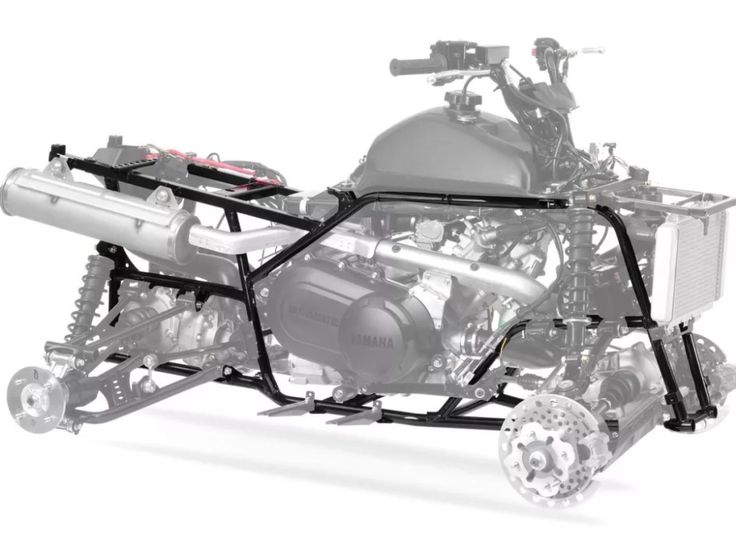
Do all ATVs come with titles? In general, almost all new ATVs (since at least 1997) come with titles today. This is due to increased demand for titles in order to get your ATV registered and insured. If you are purchasing a used ATV, there is a chance that it will not have a title – this could be due to the age of the vehicle, or the previous owner may have lost it.
While it is true that most ATVs will come with a title, it is not always necessary for you.
Many states do not require titling your all-terrain vehicle, even if they require it to have basic liability insurance. You can check online with your DMV (or transportation division) for rules in your state. This would be a great first step, especially if you are looking at used ATVs that may not come with a title.
It would be unfortunate to need a title and not have one in the instance of damage to your ATV, or if you need to report that it was stolen. In these instances, among many others, it can be beneficial to have a title.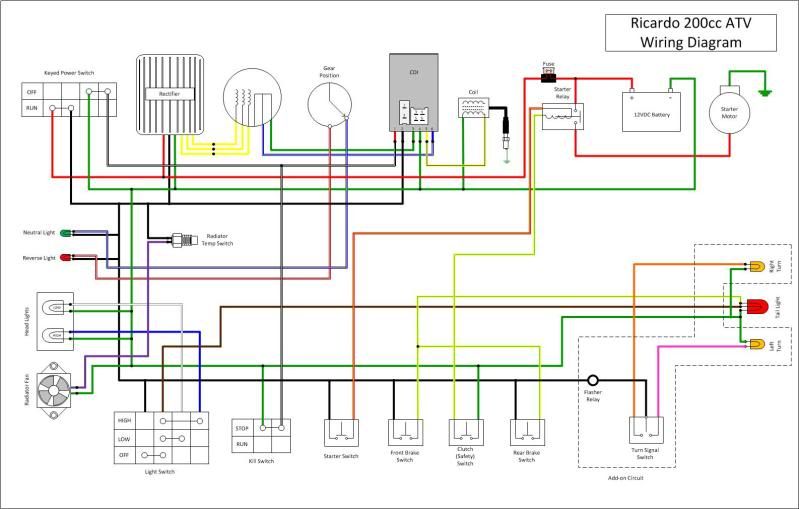 In the United States, it is important to review your state’s legislation and requirements for carrying (or at least having a copy of) your ATV’s title.
In the United States, it is important to review your state’s legislation and requirements for carrying (or at least having a copy of) your ATV’s title.
Purchasing an ATV is a big expense. You want to make sure you have everything you need in order to make it a smooth and beneficial transition for you and the owner. One of the most important things to know before buying your next ATV is whether or not the vehicle has a title. If you already bought and realized later that there is no title, try not to worry.
How do I get a title for an old ATV? If your ATV is older than the title it could have, you will likely just need a bill of sale for lawful purposes. If the ATV should have a title but does not, the best thing to do is to make sure it is not lost or stolen. If the VIN is clean, you can try to trace back owners to find the original title.
Before purchasing a vehicle without a title, it is important to understand why the title is missing.
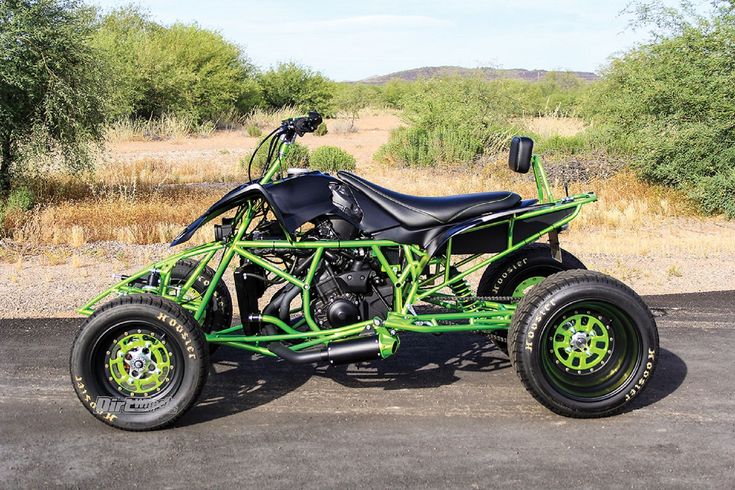
Unfortunately, the most common reason for this is because it was stolen. Often, stolen ATVs are listed without photos, and are marketed as “used” or “previously owned” but the seller does not specifically reference that they were the one that used or previously owned it.
In this way, the owner (and police) cannot find a photo of the ATV. Of course, this is not always the case, but it happens frequently enough to be known as a yellow flag among ATV purchasers. So, before you purchase a “used” or “previously owned” ATV, it’s important to do your research on what you are actually purchasing.
To avoid being accused of theft, be sure to get a VIN on the ATV that you hope to buy- especially if it does not have a verifiable title and was listed without photos on whatever website you might have found it on. This can give you a warning so you know ahead of time that you are not purchasing a stolen ATV.
It might seem like overkill to take these precautionary steps when it comes to purchasing an ATV without a title, but doing so eliminates any stress or worry that you could be accused of stealing the ATV that you clearly bought. Instead, take the steps to find the title, and if it cannot be found, be sure to file for a title (with a bill of sale) upon making your purchase.
Instead, take the steps to find the title, and if it cannot be found, be sure to file for a title (with a bill of sale) upon making your purchase.
When searching for a used ATV, you may find that often only ATVs without titles are for sale. This happens for a number of possible reasons, and you will find that often it is just fine to purchase this type of ATV. However, you should do your research beforehand and ensure proper precautions to avoid being falsely accused of theft.
Is it okay to buy an ATV without a title? You can usually purchase an ATV without a title, as long as you understand the implications. Your state may not require titles, or the ATV may be old enough to simply use a bill of sale. If you need a title for your ATV in your state, make sure you can get one before committing to an ATV that does not have one.
Make sure you get a bill of sale in any case where there is no title. Check out my ATV Bill Of Sale article for more info and free print out of a bill of sale you can use.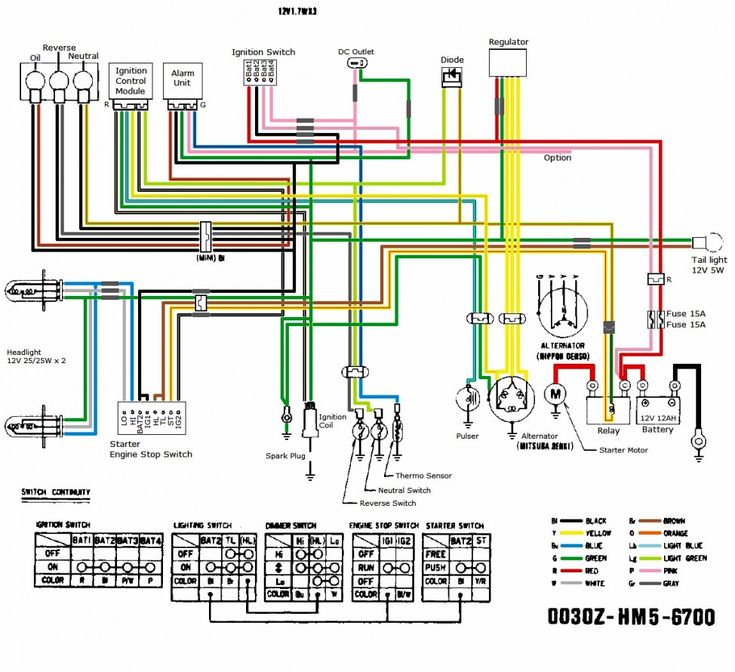
While it is okay, in most circumstances, to buy an ATV without a title, it is important to know why there was no title before going through with your purchase. The most common reasons are:
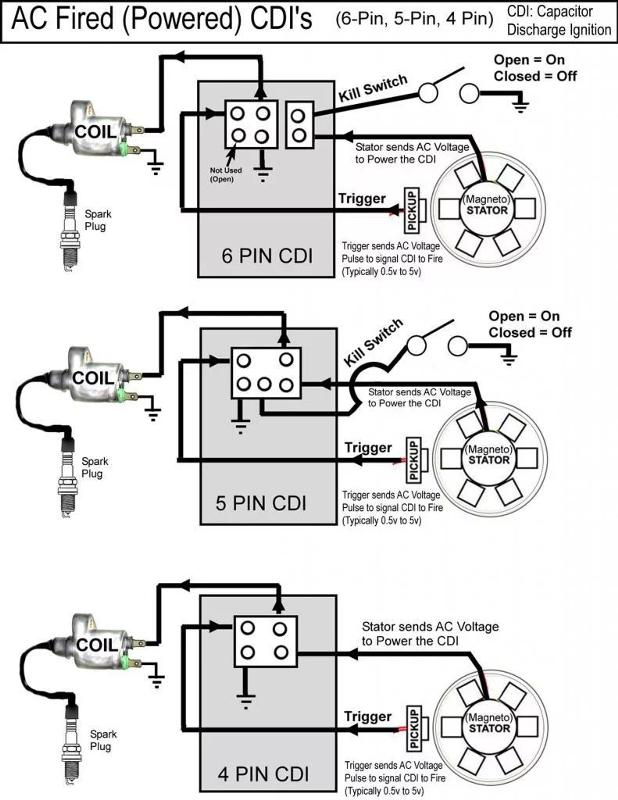 In this case, be sure to check the VIN to assure that it is a safe, legal purchase. Then, obtain a bill of sale and vouch for a new title to be put in place.
In this case, be sure to check the VIN to assure that it is a safe, legal purchase. Then, obtain a bill of sale and vouch for a new title to be put in place.The first three of these reasons that you might find an ATV without a title are fine to purchase, as long as you have a plan to get a title. The last one is, of course, not okay, not advisable, and can cause you to face legal charges and loss of your vehicle. If you encounter a stolen ATV, then it would be best to just call the authorities and continue on your search.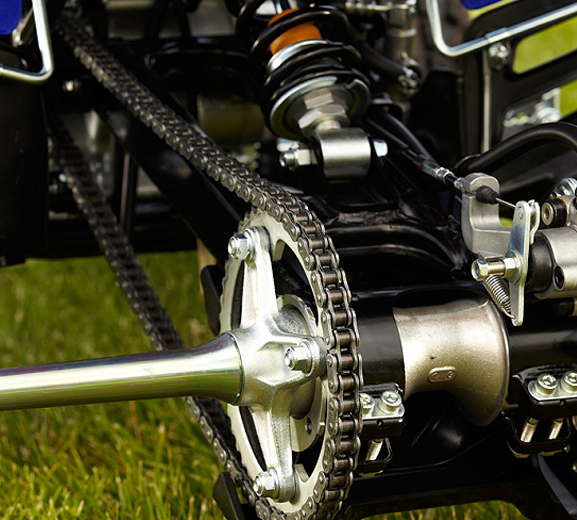
Sharing is caring!
Author: Pavel Kurlapov
So the portion of the May holidays has passed. Everyone was driven to the country, to eat barbecue in nature, or just got out of the cities in the direction of nature. And again, in the minds of many, the question arose: “why not buy a quadric?” Let's try to understand the variety of types, sizes and prices of ATVs presented in Russia.
Quadric - a thing, no doubt, useful. Do you want to go fishing, do you want to go hunting. It will become warmer - to swim in the river to drive, to carry firewood from the forest, to finally get to know the neighbors who do not thoughtlessly sour khanka on the lawn of their "hacienda" all weekend long, and now and then go on ATVs to some kind of "expeditions". In a word, there is a desire, but there is no understanding of the issue. It is to them, the understanding of the quadrocycle issue, that we will deal with in this material.
In a word, there is a desire, but there is no understanding of the issue. It is to them, the understanding of the quadrocycle issue, that we will deal with in this material.
I’ll make a reservation right away: I won’t touch on the topic of “used” equipment, since the choice of a used “square” is a rather specific topic and in each case carries many nuances, but I note that everything described below is quite suitable for used equipment .
So, before you buy a quadric, you should be puzzled by a few very prosaic things. Delivery and storage. A square, even a small one, is not a moped, you can’t roll it into a barn. So there must be a garage, and the same shed must be equipped with a gate of appropriate size and a strong lock. In my memory, there were a fair number of cases when freshly bought quadrics were taken directly from the country yard. “We have a fence”, “we lock the gates at night”, “we have a watchman” .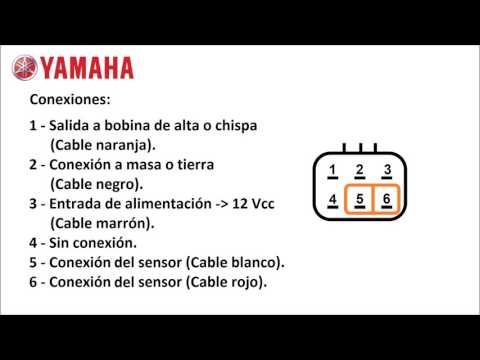 .. - all this does not work, as a rule. Anti-theft systems on off-road vehicles are nothing more than nominal, and even without a key, the quad is easily dragged away on a “tie”. There are almost never steering locks or something like that on the quad.
.. - all this does not work, as a rule. Anti-theft systems on off-road vehicles are nothing more than nominal, and even without a key, the quad is easily dragged away on a “tie”. There are almost never steering locks or something like that on the quad.
Next is transport. Nominally, ATVs are prohibited from driving on public roads. However, traffic cops often close their eyes to this, especially if the driver of the "square" has a state registration (number), technical inspection and a driver's license of a tractor driver of category "AI". You most likely will not have either at the time of purchase, and driving on asphalt is not very useful for the car itself, so it’s better to get a trailer.
The third follows from the second: find out where the department of Gostekhnadzor is located, and even better - be puzzled in advance about obtaining "tractor rights". However, we will return in more detail to the issue of registering a quadric and obtaining “rights” for it in the near future. The topic is worthy of a separate article, however, when buying a quadric, you should check with the seller how it was “imported” to Russia. There are two options. If it is a “self-propelled vehicle” according to the documents, then a passport of a self-propelled vehicle will be attached to it and a “tractor” license of category “AI” (off-road motor vehicles) will be required.
The topic is worthy of a separate article, however, when buying a quadric, you should check with the seller how it was “imported” to Russia. There are two options. If it is a “self-propelled vehicle” according to the documents, then a passport of a self-propelled vehicle will be attached to it and a “tractor” license of category “AI” (off-road motor vehicles) will be required.
The second option is that the quadric was imported as a “motor vehicle”, it is accompanied by a regular “road” PTS, like a car or a motorcycle, and, accordingly, it requires the usual rights of category “A” (or “A1”, depending on the cubic capacity) to drive it. ). The latter are mainly made by the Chinese and, most often, this is a very low quality technique, but more on that below.
The most common type can be called utility ATVs. The history of the development of this technique in recent years has turned in such an unexpected direction that it would be completely wrong to call the products of the modern ATV industry "utilitarian". However, the tradition is still strong, and we will not try to fight it, although it would be more competent to call these devices “recreational”, because they are bought (and therefore developed) mainly for recreation and entertainment.
However, the tradition is still strong, and we will not try to fight it, although it would be more competent to call these devices “recreational”, because they are bought (and therefore developed) mainly for recreation and entertainment.
In the photo: A typical representative of the utilitarian family: Yamaha Grizzly 700
It is this type of quadra that occurs in "nature" most often. The classic "junk" is an ATV equipped with a one- or two-cylinder four-stroke engine with a capacity of 350 to 1000 cm3. We will attribute smaller cubic capacity to children's and put it out of brackets. Most often, the cubic capacity revolves around 500-700 "cubes".
The junk has independent suspension on all four wheels on twin A-arms (although there are also longitudinal torsion bars at the rear (Can-Am), MacPherson torsion bars (Polaris) at the front and more exotic designs).
Photo: Trailing arm suspension on Can-Am ATVs, Classic example of "utility" suspension: dual A-arms and coil-spring shock absorber, MacPherson strut front suspension on a Polaris ATV
The transmission of the vast majority of modern utility and recreational ATVs is automatic.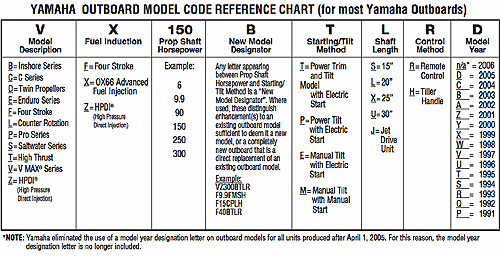 To be more precise, a V-belt variator is installed on the quadrics, complete with a demultiplier (“reduction gear”). Any quadric has forward, reverse, low and neutral gears. Sometimes there is also a "parking" mode. The variator, contrary to stereotypes, is quite reliable, it requires maintenance infrequently, especially if you don’t put the ATV into very ambush swamps and don’t drag logs half a ton in weight. Although it is always worth having a spare belt for the variator.
To be more precise, a V-belt variator is installed on the quadrics, complete with a demultiplier (“reduction gear”). Any quadric has forward, reverse, low and neutral gears. Sometimes there is also a "parking" mode. The variator, contrary to stereotypes, is quite reliable, it requires maintenance infrequently, especially if you don’t put the ATV into very ambush swamps and don’t drag logs half a ton in weight. Although it is always worth having a spare belt for the variator.
Other transmission options can only be found on Honda quads. The company traditionally works out new box designs on ATVs and then implements them on cars and motorcycles. So, on Hondas you can find a hydrodynamic transmission, and hydrostatic and even robotic mechanics with two DCT clutches. You can’t complain about the reliability of these nodes either, so you shouldn’t be afraid of them, and Honda, with its experiments, is perhaps the only company in the world that does not recognize CVTs.
Pictured: Hondamatic is a variant of Honda's hydrostatic transmission.
Of course, the classic utilitarian is equipped with an all-wheel drive system. If you are offered "junk" only with rear-wheel drive, then this is either a motocross machine, or some completely mediocre and rotten "Chinese". You should not look in the direction of this, unless you are an athlete. But there will be a separate discussion about crossovers.
The classic all-wheel drive scheme is a permanent rear-wheel drive without an interwheel differential, a hard-wired (also without a differential) front axle, and a forced locking of the only differential - an interwheel, front axle. There are also self-locking systems, such as BRP's Visco Loc, which are installed on all Can-Am quads. It is precisely because of these features that it is not worth abusing riding a “scrap” on asphalt.
This is what a typical off-road ATV looks like.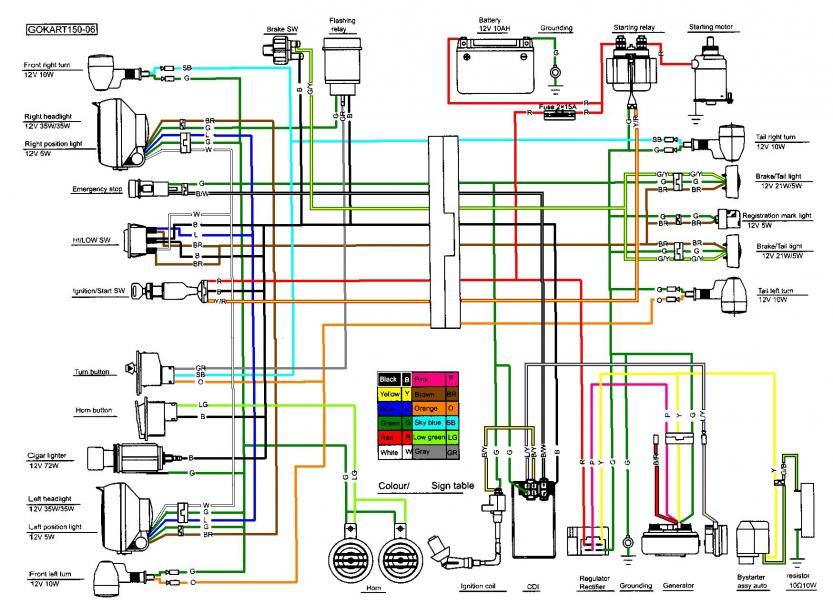 There can be a million options and “colors”: cast or stamped wheels, Chinese, Japanese, Americans, Canadians, bright and in camouflage, empty like a refrigerator, or stuffed with tuning ... All of them will have all of the above features: all-wheel drive, automatic transmission, four-stroke engine with no more than two cylinders.
There can be a million options and “colors”: cast or stamped wheels, Chinese, Japanese, Americans, Canadians, bright and in camouflage, empty like a refrigerator, or stuffed with tuning ... All of them will have all of the above features: all-wheel drive, automatic transmission, four-stroke engine with no more than two cylinders.
For quite a long time, the global industry produced only single ATVs. The Japanese (Honda and Yamaha) still produce exclusively single-seat models and even declare that they will never make two-seaters. In their opinion, it is too dangerous. However, there are many companies, both European, American and Asian, that make two-seat models. I will say even more: now two-seater quadrics account for the lion's share of sales. It’s no wonder: it’s more fun to ride together, and it’s convenient on the farm, if you need to bring something, take it away.
In the photo: Can-Am Outlander Max is one of the brightest representatives of two-seater ATV
The main structural difference between a two-seat car and a regular one is the elongated frame (and stretched wheelbase), which allows you to install a second seat and a second set of footrests.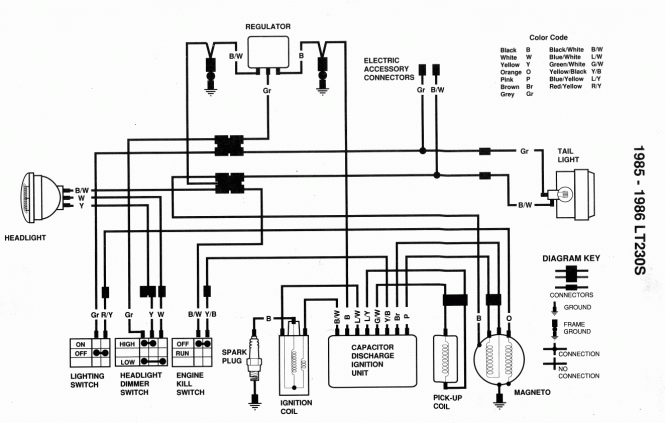 Such a quadric always has the best ride, but worse handling and maneuverability. The reason for this is the stretched wheelbase and more weight.
Such a quadric always has the best ride, but worse handling and maneuverability. The reason for this is the stretched wheelbase and more weight.
So if the quad is taken precisely as a pleasure vehicle, then, of course, it makes sense to look towards double cars. If you are going to cut yourself in serious “mud”, conquer untrodden swamps and participate in trophy raids, then, of course, the choice should be stopped at a single “egoist”.
It is worth noting that there are also kits that allow you to place a passenger on a single car, but manufacturers categorically do not recommend installing such tuning. A short car designed for one person becomes very unstable with two riders on the "back". Although many go and do not complain.
In the photo: Yamaha Grizzly with a non-standard passenger seat
UTV - utility task vehicle is translated as a vehicle for economic purposes.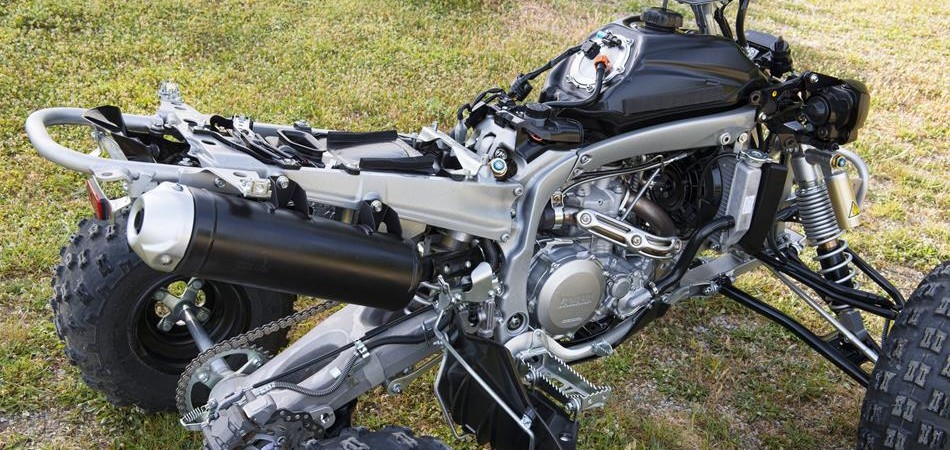 Otherwise, such devices are called SSV, or side-by-side vehicle - a vehicle with a transverse arrangement of riders. In Russian, they are called “yu ti vie”, “side-by-side” or simply “side”, and sometimes even “kibitka”.
Otherwise, such devices are called SSV, or side-by-side vehicle - a vehicle with a transverse arrangement of riders. In Russian, they are called “yu ti vie”, “side-by-side” or simply “side”, and sometimes even “kibitka”.
Pictured: A typical utility UTV Polaris Ranger
This is a two-, four- or even six-seat machine, built on the basis of a conventional ATV and having a ATV engine, transmission and wheels. This is their main difference from the buggy. Outwardly, "sides" and buggies are similar, but the buggy often does not have all-wheel drive, but it has a car engine, a manual gearbox from it, and car wheels. Buggy is a car, "side" is an ATV.
Pictured: The most spacious UTV in production today is the six-seat Yamaha Viking 6.
"Yutivishki" today, perhaps, the most rapidly developing class. With almost the same cross-country ability as ordinary quadras, noticeably more people get into the "kibitka" and much more cargo is placed.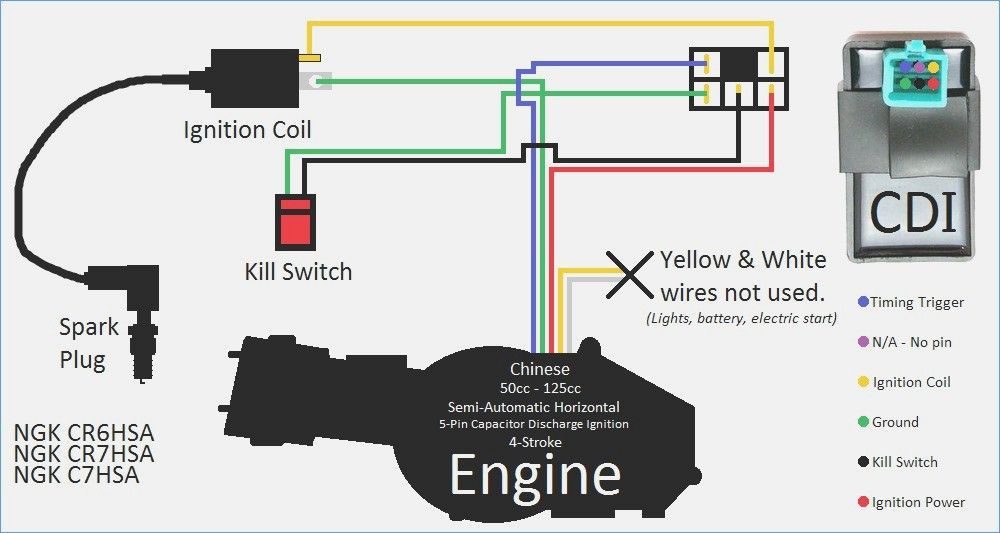 Such cars consume almost the same amount of fuel, but the safety of the "sides" is noticeably higher, especially if you follow the safety precautions. Therefore, there are plenty to choose from.
Such cars consume almost the same amount of fuel, but the safety of the "sides" is noticeably higher, especially if you follow the safety precautions. Therefore, there are plenty to choose from.
Pictured: Most Passable Utility UTV
But the whole variety of sides and ATVs does not end there. In this material, we practically did not touch on sports and “mud” models, but we will talk about them in the next part of this material.
So, we, albeit very superficially, have determined what an ATV is, how it differs from a “side-by-side”, and that, in turn, from a buggy. In general, even this is already quite enough to understand what your soul is for.
Most often, an ATV in Russia is bought specifically for near-dacha use and they do not impose any outstanding power or “passable” requirements on it. However, in the second part of the material, we will talk in more detail about less common, but no less interesting “quad breeds”, such as sports ATVs and UTVs, mud, asphalt and children’s cars.
However, in the second part of the material, we will talk in more detail about less common, but no less interesting “quad breeds”, such as sports ATVs and UTVs, mud, asphalt and children’s cars.
Articles / Practice Do No Harm: 10 Common Winter Car Mistakes In winter, the car is much more vulnerable than in the warm season. Many parts lose their flexibility, elasticity, become brittle. But a bit of attention and understanding on the part of the driver allowed ... 394 2 0 12/01/2022
Articles / Statistics Not only parallel imports: why and how dealers join the fight for the secondary market With a shortage of new cars, the focus of many buyers has shifted towards used cars. The phenomenon is sad, but predictable and quite normal. Well, the second normal phenomenon ... 835 3 one 29.11.2022
The phenomenon is sad, but predictable and quite normal. Well, the second normal phenomenon ... 835 3 one 29.11.2022
Articles / Auto and technology Billions of tons of oil and An-24: the first 2,500 km of the "oil route" were completed We continue to follow the journey of Alexey Zhirukhin and Sergey Lysenko, who cover a route of 12 thousand kilometers along the path of oil from the well to the consumer. This is a joint project "Mezhre... 753 0 one 29.11.2022
Test drives / Test drive Haval Dargo vs Mitsubishi Outlander: the dog is barking, the stranger is coming In the Haval dealership in the south of Moscow, life is in full swing: buyers look at cars, communicate with managers and sign some papers. While I was waiting for the test Dargo, the same cross... 17893 7 205 13.09.2022
While I was waiting for the test Dargo, the same cross... 17893 7 205 13.09.2022
Test drives / Test drive Motor from Mercedes, emblem from Renault, assembly from Dacia: test drive of the European Logan 1.0 It would seem that what's new can be told about the second generation Renault Logan, known to every Russian taxi driver, as they say, up and down? However, this car has... 14360 ten 41 08/13/2022
Test drives / Test drive Geely Coolray vs Haval Jolion: Free Cheese? If! Do you want to buy a car today with a full warranty, on credit at an adequate rate, without wild dealer markups? Now this is still a task, because a full-fledged chain of "representation - s. .. 11573 26 thirty 08/10/2022
.. 11573 26 thirty 08/10/2022
The modern market offers fans of active and at the same time extreme recreation ATVs for every taste and color. The undeniable leader in this segment is the Japanese manufacturer of this type of equipment with the world name Yamaha. The widest range of ATVs, snowmobiles and all-terrain vehicles under this brand makes it possible to choose equipment that will satisfy any wishes of the client.
Taking into account all the wishes and fantasies of outdoor enthusiasts, Yamaha launches equipment on the market with various configurations and capabilities. Among the model range of this brand, you can find heavy-duty and fast, or more comfortable and quiet, with increased cross-country ability, and even children's ATVs. The most popular and common models include the following:
Compact model with good performance.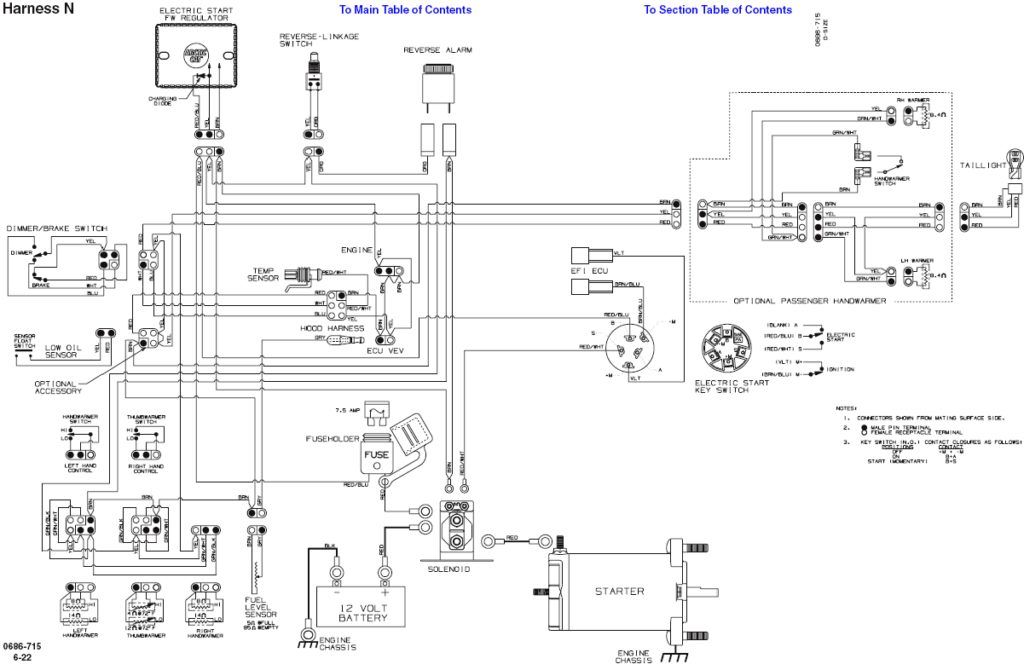 It is equipped with a four-stroke single-cylinder engine and a manual transmission. It has an effective independent suspension and combined brakes. Pretty agile and nimble. The modern plastic case adds aggressiveness to the design.
It is equipped with a four-stroke single-cylinder engine and a manual transmission. It has an effective independent suspension and combined brakes. Pretty agile and nimble. The modern plastic case adds aggressiveness to the design.
ATV from the Raptor series, like the previous model. It is equipped with a very powerful 686 cc engine. and a mechanical 5-speed transmission, which allows you to achieve excellent results, both in high-speed sections and in difficult terrain. It has independent suspension and hydraulic ventilated brakes.
Yamaha's flagship racing ATV. With its light weight and powerful 500cc four-stroke engine, it delivers exceptional acceleration and agility. The hydraulic braking system ensures driving safety, while the efficient suspension improves traction, which allows you to constantly control the behavior of the machine.
A compact utility ATV that is perfect for both experienced riders and beginners. The automatic transmission and modern technologies that this instance is equipped with make it easy to master the basics of controlling this type of equipment. Due to the high ground clearance and wide base, this ATV model shows good results in extreme movement over rough terrain, providing the device with stability and controllability.
The automatic transmission and modern technologies that this instance is equipped with make it easy to master the basics of controlling this type of equipment. Due to the high ground clearance and wide base, this ATV model shows good results in extreme movement over rough terrain, providing the device with stability and controllability.
Among all the varieties and models of ATVs, perhaps the most popular and popular is the Yamaha Grizzly 700, which has received many positive reviews from satisfied consumers. It is used both for sports driving on difficult surfaces, and for tourist trips through deserts, jungles and other difficult land areas. The ATV is equipped with a heavy-duty 700 cc engine with direct fuel injection. A 5-speed manual transmission with a drive shaft to all wheels provides precise torque selection for a specific section of the track.
ATV developers are stuffed to capacity with electronics that control the suspension, brake system and other components and mechanisms.